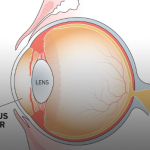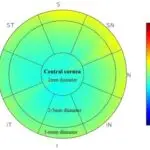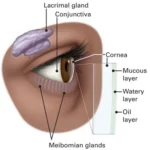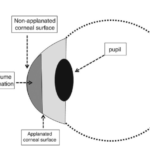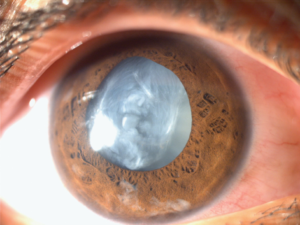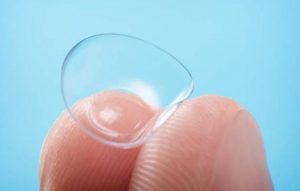The Relationship Between Intraocular Pressure and Corneal Thickness: Understanding the Dynamics
Intraocular pressure (IOP) and corneal thickness are two critical factors in maintaining the
health of the eye. While they may seem like separate entities, research has shown that
there is a significant relationship between the two. In this blog, we’ll delve into the
dynamics of this relationship and explore its implications for eye health.
What is Intraocular Pressure?
Intraocular pressure refers to the pressure exerted by the fluids within the eye, particularly
the aqueous humor. This pressure is essential for maintaining the shape of the eye and
facilitating the flow of nutrients and waste products. However, abnormally high IOP can
lead to conditions such as glaucoma, which can cause irreversible vision loss.
What is Corneal Thickness?
Corneal thickness refers to the thickness of the cornea, the transparent outer layer of the
eye. The cornea plays a crucial role in refracting light and protecting the eye from external
damage. Corneal thickness can vary from person to person, and it’s influenced by factors
such as age, genetics, and environmental conditions.
The Relationship Between IOP and Corneal Thickness
Studies have consistently shown that there is a significant relationship between IOP and
corneal thickness. Here are some key findings:
1. Corneal thickness affects IOP measurements: The thickness of the cornea can
influence the accuracy of IOP measurements. Thicker corneas can lead to overestimation
of IOP, while thinner corneas can lead to underestimation.
2. IOP can influence corneal thickness: Elevated IOP can cause the cornea to thin, which
can lead to a decrease in corneal thickness. Conversely, reduced IOP can cause the
cornea to thicken.
3. Corneal thickness can be a risk factor for glaucoma: Research has shown that
individuals with thinner corneas are more likely to develop glaucoma. This may be due to
the increased susceptibility of thinner corneas to damage from elevated IOP.
Implications for Eye Health
The relationship between IOP and corneal thickness has significant implications for eye health. Here are some key takeaways:
1. Accurate IOP measurements are crucial: Given the impact of corneal thickness on IOP measurements, it’s essential to use accurate and reliable methods for measuring IOP.
2. Corneal thickness should be considered in glaucoma diagnosis: When diagnosing glaucoma, eye care professionals should take into account the patient’s corneal thickness to ensure accurate IOP measurements.
3. Maintaining healthy corneas is essential: Taking care of the corneas through regular eye exams, proper eye hygiene, and protective eyewear can help maintain healthy corneas and reduce the risk of glaucoma.
Conclusion
In conclusion, the relationship between intraocular pressure and corneal thickness is complex and multifaceted. Understanding this relationship is essential for maintaining eye health and preventing conditions such as glaucoma. By considering the interplay between IOP and corneal thickness, eye care professionals can provide more accurate diagnoses and effective treatments, ultimately protecting the health and vision of their patients.




